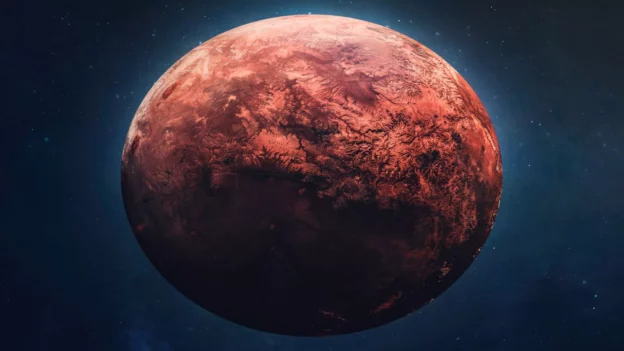NASA has made a crucial discovery about methane on Mars using the portable chemistry laboratory aboard the Curiosity rover, known as SAM (Sample Analysis on Mars), finding traces of this gas near the surface of Gale Crater.
This finding is significant, as Mars has been shown to have methane in only one location detected to date, which has important implications for future missions to the Red Planet.
Finding of methane on Mars: evidence and hypotheses
Based on research, it is suggested that the most likely source of this methane is underground geological activity , specifically the interaction between water and rocks. Interestingly, measurements indicate that methane on the Martian surface occurs predominantly at night and tends to disappear during the day. This pattern results in fluctuations that can increase the concentration of the gas up to 40 times higher than normal.
A recent study published in March in the Journal of Geophysical Research: Planets, led by Alexander Pavlov, a planetary scientist at NASA’s Goddard Space Flight Center, shows that methane could be trapped under layers of solid salt which forms in the Martian regolith, composed of rocks and dust. According to Pavlov, this methane could be released in bursts when these salt layers break under pressure, something that could happen if a vehicle the size of a small SUV drove over them.
This hypothesis would help explain the methane concentration observed in Gale Crater , one of the sites on Mars where rovers have drilled and explored intensively.
Importantly, Pavlov’s team also conducted experiments with permafrost samples containing perchlorate, a salt prevalent on Mars. By simulating Martian conditions in a chamber at Goddard and injecting neon as a methane analog under these samples, they observed that a seal formed that varied in duration depending on the concentration of perchlorate, indicating that This salt could be key in the retention and release of Martian methane.
This discovery undoubtedly advances our understanding of the geology of Mars and opens the possibility of using Martian natural resources to support future human missions and possible colonization.
Follow us on social networks and don’t miss any of our publications!
Inspenet.com YouTube LinkedIn Facebook Instagram X
Source: vandal.elespanol.com
Photo: shutterstock


